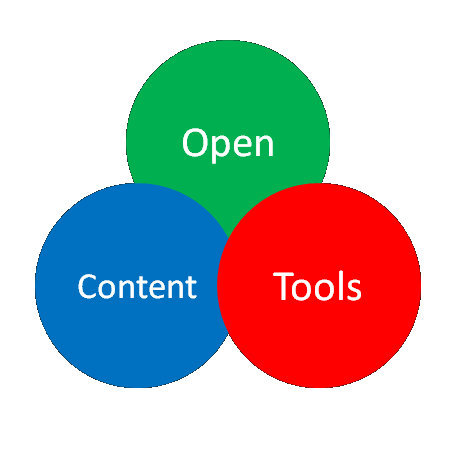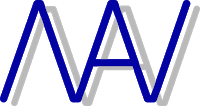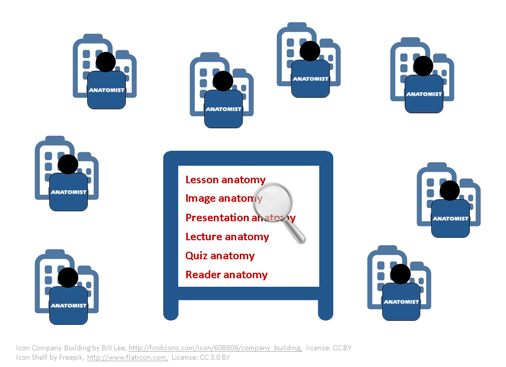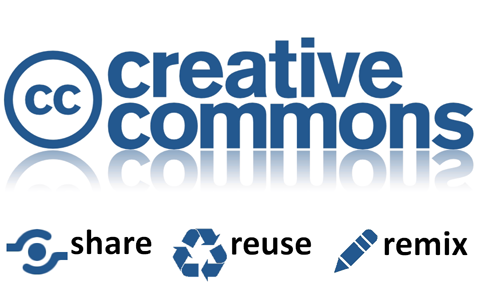AnatomyTOOL (Topic Oriented Open Learning) platform

AnatomyTOOL is a platform for learning and teaching of Anatomy that offers open, quality reviewed, anatomical learning materials and tools.
Open means that it is largely accessible without logging in, and that most offered materials can be freely reused, because they are licensed under a Creative Commons license.
AnatomyTOOL is an initiative of the departments of Anatomy of Leiden University Medical Center and University Maastricht, Netherlands, in collaboration with departments of Anatomy in the Netherlands and Flanders. It is under auspices of the Dutch Association of Anatomists (Nederlandse Anatomen Vereniging - NAV). Its development was supported by a grant of the Dutch Ministry of Education, Culture and Science, in its 2015 Open Online Education Incentive scheme.
Project Open Anatomy Learning Materials (TOOL2)
Read about the new Project Open Anatomy Learning Materials (TOOL2).
Introduction video
This video (4:07 min.) gives a short introduction on the AnatomyTOOL platform and the possibilities it offers for teaching and learning anatomy.
Goals
AnatomyTOOL aims to alleviate some bottlenecks in anatomy teaching and learning:
- Few good open anatomical illustrations available.

Teachers and students frequently need anatomical images. The images from the Web are often illegaly published or copied. Moreover, students cannot always determine their correctness. Especially creation of online learning resources is hampered because the copyright protected images cannot be used. AnatomyTOOL aims to alleviate this by collecting anatomical images, donated by the departments of Anatomy, licensed under an open (Creative Commons) license and by initiating the development of an Open Anatomical Atlas. - Searching anatomical information is reliable OR fast.
Anatomical books and atlasses offer reliable information, but searching them is slow (checking the index, searching on the page for the item). On the other hand, search engines on the Web offer fast look up, but good quality and bad quality resources are mixed. Many present-day students tend to rely on online information but students cannot always distinguish correct and incorrect information. AnatomyTOOL aims to offer both reliable and fast findable anatomical information. Reliable because all materials on AnatomyTOOL will be expert reviewed. Fast because the materials are offered in a mash-up that allows searching via several different routes. - Insufficient anatomical exercise and repetition tools for students.
Little free exercise and repetition tools (questions for rehearsing and self-testing) on anatomy are available. AnatomyTOOL aims to address this by offering open self-tests that are randomly generated from the question pool, based on subjects as chosen by the user. - Lack of online anatomical educational tools for lecturers.
There are little openly available tools for teachers to use in teaching anatomy, such as ready available sets of questions on anatomy, tools to generate learning paths, or anatomical viewers. Tools to generate quizzes are usually available within the institutional electronic learning environments, but the questions are distributed over modules. Moreover, each institution has to create her own set of questions, whilst many questions would be reusable across institutions. AnatomyTOOL aims to assist teachers by collecting anatomical questions and offering them for reuse or embedding in quizzes, by offering a tool to easily create learning paths and by offering freely available cross-sectional anatomy viewers and virtual microscopy viewers.
Contributing Institutions and governance
 AnatomyTOOL is under auspices of the Dutch Association of Anatomists (Nederlandse Anatomen Vereniging - NAV).
AnatomyTOOL is under auspices of the Dutch Association of Anatomists (Nederlandse Anatomen Vereniging - NAV).
Departments of Anatomy of the below educational institutions financially support or offer contributions to AnatomyTOOL:
- Amsterdam, the Netherlands - ACTA - Ma-Education Dentistry
- Amsterdam, the Netherlands - AMC – UVA (University of Amsterdam)
- Amsterdam, the Netherlands - VUMC – VU (Free University)
- Antwerp, Belgium - University of Antwerp
- Ghent, Belgium - University of Ghent
- Groningen, the Netherlands - UMCG (University Medical Center Groningen)
- The Hague, the Netherlands - The Hague University of Applied Sciences, Technology of Physical Motion
- Hasselt, Belgium - University Hasselt
- Leiden, the Netherlands - LUMC (Leiden University Medical Center) - Project initiator and manager
- Leuven, Belgium - KU Leuven, campus Kortrijk
- Maastricht, the Netherlands - Maastricht University - Project lead partner
- Nijmegen, the Netherlands - UMCN – Radboud University (University Medical Center Nijmegen)
- Rotterdam, the Netherlands - EUR (Erasmus University Rotterdam)
Key principles of AnatomyTOOL
Topic Oriented


.
Open

Learning platform
AnatomyTOOL contains both content and tools for learning and teaching. It holds a combination of materials within the platform and references to online materials in a mash-up searchable in several ways: by typing an anatomical structure in the search-box, by browsing on Region or System, or by browsing per topic or per file format.
.
Open source
![]() AnatomyTOOL is open source. Its source code is available at GitHub. The intent is that similar platforms can be developed by other subject communities for their discipline.
AnatomyTOOL is open source. Its source code is available at GitHub. The intent is that similar platforms can be developed by other subject communities for their discipline.
- 43272 reads
